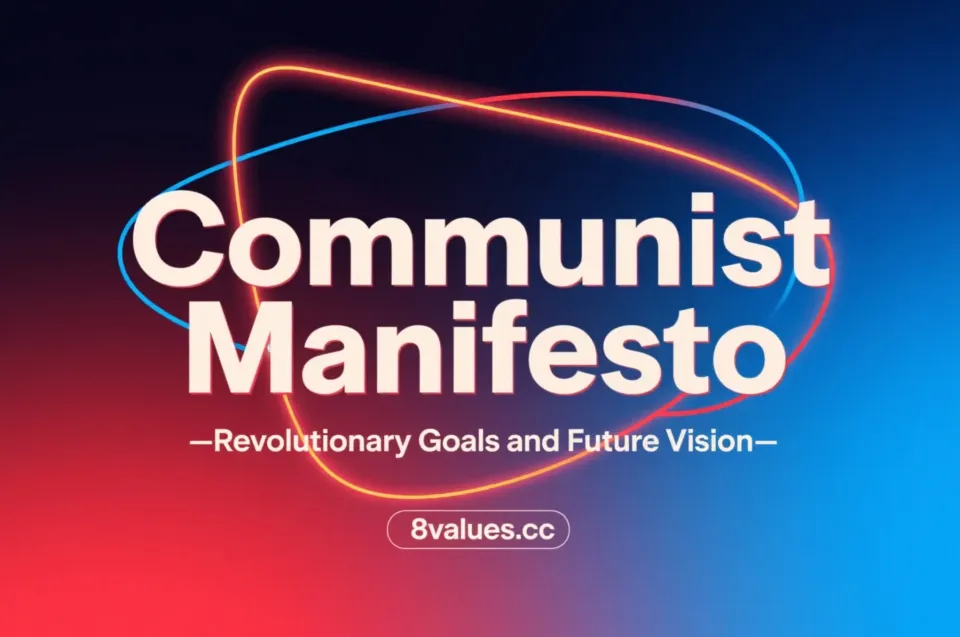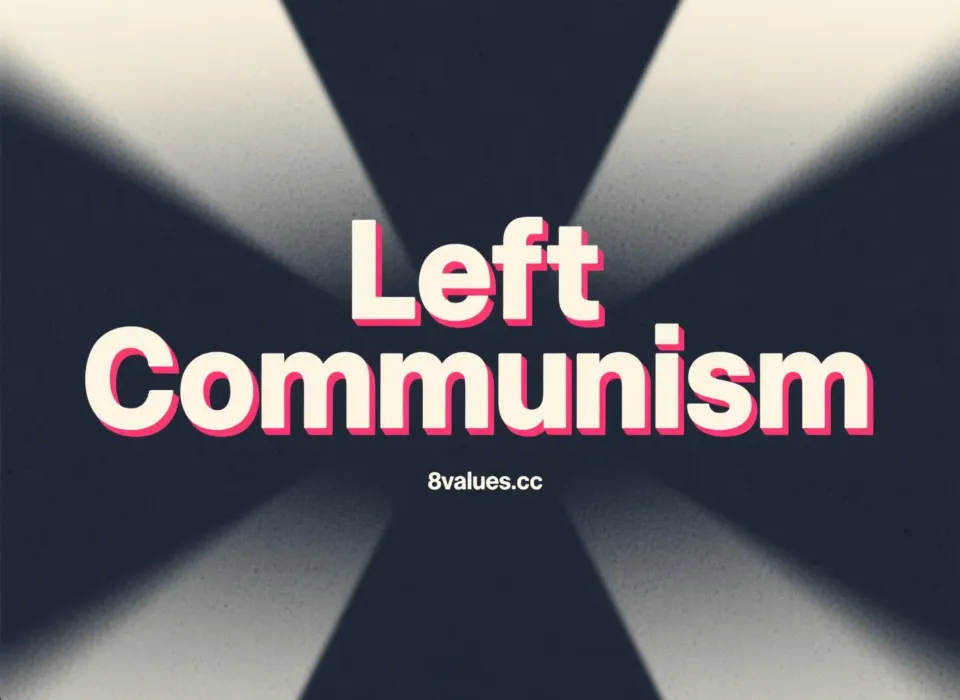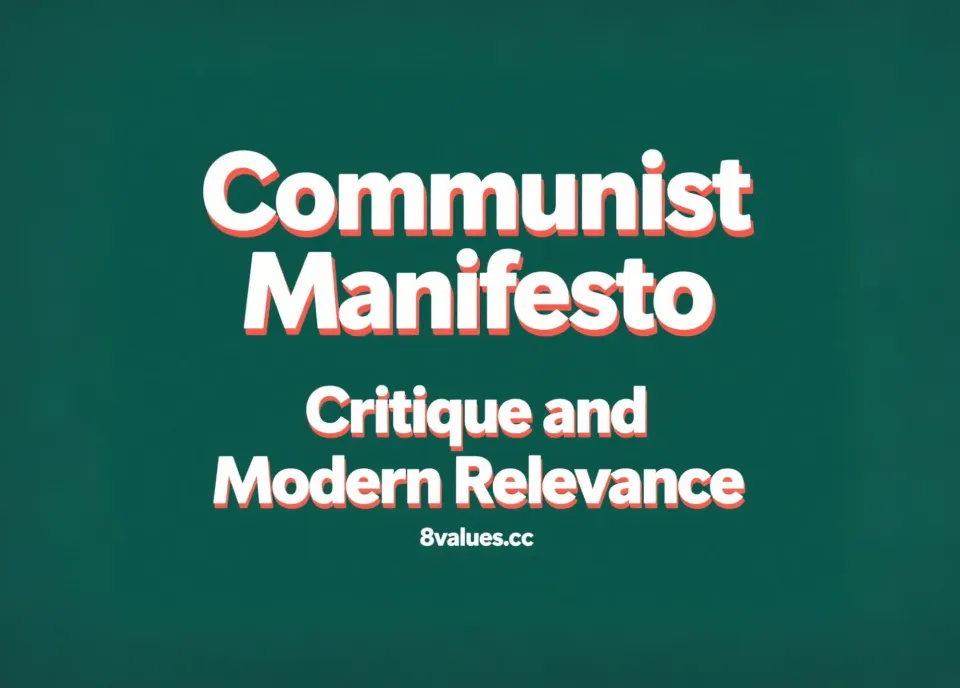Stalinism | 8values Interpretation of ideological ideology in political tests
A thorough interpretation of Stalinism, a political ideology, explore its theory and practice in Soviet socialist construction, economic policy, personality cult and international influence, and understand its historical status and disputes. Complete 8 values political orientation tests to explore your ideological stance.
Stalinism refers to the political and economic theoretical system named by Joseph Stalin , the former Soviet supreme leader, from 1924 to 1953, as well as the socialist political, economic, ideological, cultural system and operating mechanism established in the Soviet Union according to this system. This ideology profoundly influenced the Soviet Union and even the global socialist movement in the 20th century, and triggered widespread discussion and diverse evaluations.
The etymology and formation background of Stalinism
The term "Stalinism" was first proposed by Stalin's close ally Lazar Kaganovich in the 1930s. However, Stalin himself, as a determined Marxist-Leninist, refused to use the term, which he believed would encourage personality cults. In his opinion, he himself was a loyal supporter of Marxism-Leninism, especially the successor of Vladimir Lenin's thought.
The rise of Stalinism is closely linked to the period known as the Great Break in Soviet history (1928-1932). During this period, the Soviet Union's economy and society underwent profound changes through state-led industrialization and agricultural collectivization. After Lenin's death in 1924, Stalin gradually consolidated his power in political struggles with other party leaders such as Leon Trotsky, Grigory Zinoviev, Lev Kamenev and Nikolai Bukharin.
In 1924, Stalin proposed the theory of "Socialism in One Country". This theory holds that socialism can be built and consolidated within a country even when the world revolution has not yet succeeded. This is in sharp contrast with the "Permanent Revolution" proposed by Trotsky, and to a certain extent reflects the interests of the Soviet bureaucratic class at that time.
The core policies and characteristics of Stalinism
As a unique political and economic system, Stalinism showed a series of distinctive characteristics in the social governance of the Soviet Union:
Economic Policy: Planning and Change
- Highly centralized directive planned economic system : Stalinism promotes a highly centralized planned economy, emphasizes the public ownership of means of production, and is mainly composed of state-owned enterprises and collective farms. Among them, the Five-year plan is the core of economic development. By setting strict production quotas and goals, we strive to achieve an economic leap in a short period of time.
- Priority to the development of heavy industry and industrialization : The Soviet Union under Stalin was committed to rapidly transforming a backward agricultural country into an industrial power, and prioritizing the development of heavy industry, especially the defense industry, in order to enhance the country's economic strength and national defense strength.
- Agricultural collectivization : implement mandatory agricultural collectivization, combining farmers' private land and farms into collective farms. This policy aims to provide capital, labor and food for industrialization, but has also led to the suppression of "rich peasants" and large-scale famines (such as the Great Ukrainian Famine and the Great Kazakh Famine).
Political system: centralization and cult of personality
- Strengthening of the dictatorship of the proletariat : Stalin believes that before the transition to complete communism, the proletarian state must become stronger to effectively combat counter-revolutionaries, which is different from the theory that the traditional Marxist state will eventually “death”. Therefore, the regime under Stalinism is described as a one-party totalitarian state .
- Cult of personality : A distinctive feature of Stalinism is the cult of personality surrounding Stalin himself. He was portrayed as a "father", "savior", "warrior", and other images, and was closely linked to the country and the symbols of Marxism. Although Stalin himself had expressed his early opposition to over-praise, this cult of personality flourished during his reign.
- The cadre appointment system led by the Party : Power is highly concentrated in the highest organization of the Party Central Committee, the Party and government are united, and the state affairs are directly managed through the top-down cadre appointment system, ensuring the overall leadership of the Communist Party.
Social Control: Suppression and Reformation
- Intensification and large-scale suppression of class struggle : Stalinism emphasizes the intensification of class struggle in the period of socialist construction. This led to a large-scale political purge of the so-called "enemy of the people" inside and outside the party, namely the "Great Purge". Millions of people were imprisoned or executed in gulags labor camps, many without fair trial.
- Ideological suppression and censorship : The Soviet Union implemented strict ideological control and censorship in the fields of academics, natural sciences, literature and arts. Socialist realism is established as an official art form, requiring all cultural products to serve the interests of the Party and the socialist spirit.
- Forced exile and ethnic cleansing : During the Stalin period, ethnic cleansing also took place through forced exile.
The relationship between Stalinism and Marxism-Leninism
Stalin himself and his supporters believe that Stalinism is the theoretical and practical development of Marxism-Leninism in a specific historical stage of socialist construction. Some scholars believe that if we must talk about "Stalinism", we should say that it is first of all communism and Marxism-Leninism, which is the main aspect; secondly, it contains some serious mistakes that must be corrected. In the communist theory community, some scholars usually tend to use the statement of "Soviet model" rather than "Stalinism" when discussing the system of the Soviet Union during the Stalin period to reflect its complexity more objectively.
However, the relationship between Stalinism and Leninism and other Marxist schools has been the long-standing focus of controversy in the international communist movement since the 20th century:
Lenin and Stalin: Inheritance and Difference
Some historians believe that Stalinism is a natural continuation of Leninism, and Stalin faithfully implemented Lenin's domestic and foreign policies. They pointed out that Lenin had initiated the red terror, established concentration camps and a one-party system.
But there are also a large number of views that Stalinism is a deviation and distortion of Leninism. Lenin criticized Stalin's "rough" character many times and suggested in his will to remove Stalin from his position as general secretary of the Soviet Communist Party. Critics pointed out that Lenin advocated collective leadership and worker democracy, while Stalin established a highly centralized system of individual arbitrary suppression of dissent within the party. In addition, the ban on opposition parties and factions in the party were regarded as temporary measures in the state of civil war, while the Stalinian period established it as the principle of normality.
The Criticism of Trotskyism
Lev Trotsky and his followers ( Trotskyists ) are one of the most intense critics of Stalinism. They believed that the Soviet Union under Stalinism was not truly socialism or communism, but a "bureauscratized degenerated workers' state", whose bureaucracy was not the owner of the means of production, but accumulated interests and privileges at the cost of the working class. Trotsky criticized Stalin's theory of "one country socialism" and believed that this deviated from the principles of world revolution. He advocated industrialization, but opposed Stalin's forced collectivization and suppression of intra-party democracy, believing that workers' democracy is the "oxygen" of the planned economy.
Other explanations
Some scholars describe the Soviet Union during the Stalin period as "State Capitalism" and believe that its bureaucracy constituted a new ruling class. However, Trotskyists refuted this view, believing that the Soviet bureaucracy was a parasitic class that did not play a necessary role in the production process, rather than a ruling class in the Marxist sense. They stress that Marxism defines class from property relations rather than management functions.
The Historical Heritage and Evaluation of Stalinism
Joseph Stalin's political career had a complex and profound impact on the Soviet Union and the world in the 20th century. The evaluation of Stalinism must not only see its historical achievements, but also not ignore its existing problems and limitations.
Historical achievements and positive contributions
- Achievements of Industrialization : Under Stalin's leadership, the Soviet Union quickly transformed from a backward agricultural country to a powerful industrial country. Through a series of five-year plans, the Soviet Union established a relatively complete industrial system, significantly improving its economic strength and national defense capabilities, laying a solid foundation for later resisting the invasion of Nazi Germany in World War II.
- Victory of the Patriotic War : Stalin led the Soviet Red Army in World War II, fought in concert with the Allies, defeated the Axis powers, and achieved a great victory in the Patriotic War of the Soviet Union. This victory made an important contribution to the victory of the world's anti-fascist struggle and the advancement of world peace.
- The Development of Marxism-Leninism : Stalin further enriched and developed Marxism-Leninism in theory and practice, especially during the period of socialist construction.
Existing errors and negative effects
- Large-scale repression and human rights violations : The great purge and forced agricultural collectivization during the Stalinist period resulted in large numbers of casualties and serious human rights violations. Millions of people were sentenced to death, imprisonment in labor camps or forced exile.
- Economic imbalance and social problems : Overemphasis on heavy industry has led to a relatively lag in the development of agriculture and light industry to a certain extent, affecting the coordinated economic development and the improvement of people's living standards.
- The political system is rigid : Some of Stalinist practices in politics have led to a high concentration of power and institutional rigidity, suppressing different opinions and criticism voices inside and outside the party, and exerting a suppressive effect on social vitality.
- The harm of personality cult : The personality cult surrounding Stalin has brought serious negative effects, hindering the principles of intra-party democracy and collective leadership.
De-Stalinization and historical reflection
After Stalin's death, the new Soviet leadership, represented by Nikita Khrushchev, launched the "De-Stalinization" movement at the 20th National Congress of the Communist Party of the Soviet Union in 1956. Khrushchev severely criticized Stalin's cult of personality and large-scale repression in his "secret report".
However, some scholars believe that the question of how to understand and treat Stalin is not only a question of personal evaluation of Stalin, but more importantly, it is a question of summarizing the historical experience of the proletarian dictatorship and the international communist movement after Lenin's death. To completely deny Stalin and engage in so-called non-Stalinization is not essentially opposing personality cults or correcting mistakes, but to use this as an excuse to completely deny the objective laws and inevitable trends of social and historical development, deny Marxism-Leninism and scientific socialism, deny the dictatorship of the proletariat and the leadership of the Communist Party, betray Marxism-Leninism, abandon scientific socialism, and invest in Western capitalist forces. Khrushchev's serious mistakes in Stalin's evaluation brought serious impacts and huge losses to the reputation and practice of the international communist movement, and eventually led to the disintegration of the Soviet Union and drastic changes in the Eastern European socialist countries.
Contemporary evaluation of Stalinism
In the contemporary era, the evaluation of Stalin and his historical role continues. In Russia, positive comments about Stalin have rebounded in recent years, especially in the context of his leadership of the Soviet Union to victory in the Patriotic War. This reflects that the evaluation of historical figures should be analyzed under the historical conditions of the times and society in which they live, and cannot be separated from the comprehensive understanding of historical conditions and historical processes and the scientific grasp of historical laws.
As a powerful force on the global political stage in the 20th century, Stalinism's complex historical appearance and far-reaching influence are worthy of our continuous in-depth discussion. With the 8values political orientation test , you can gain a deeper understanding of your position in this ideological spectrum and think about its impact on history and current society. Also, welcome to the 8values All Results Ideology page to learn more about the detailed introduction of different ideologies and explore more insights into political thought in our official blog .






